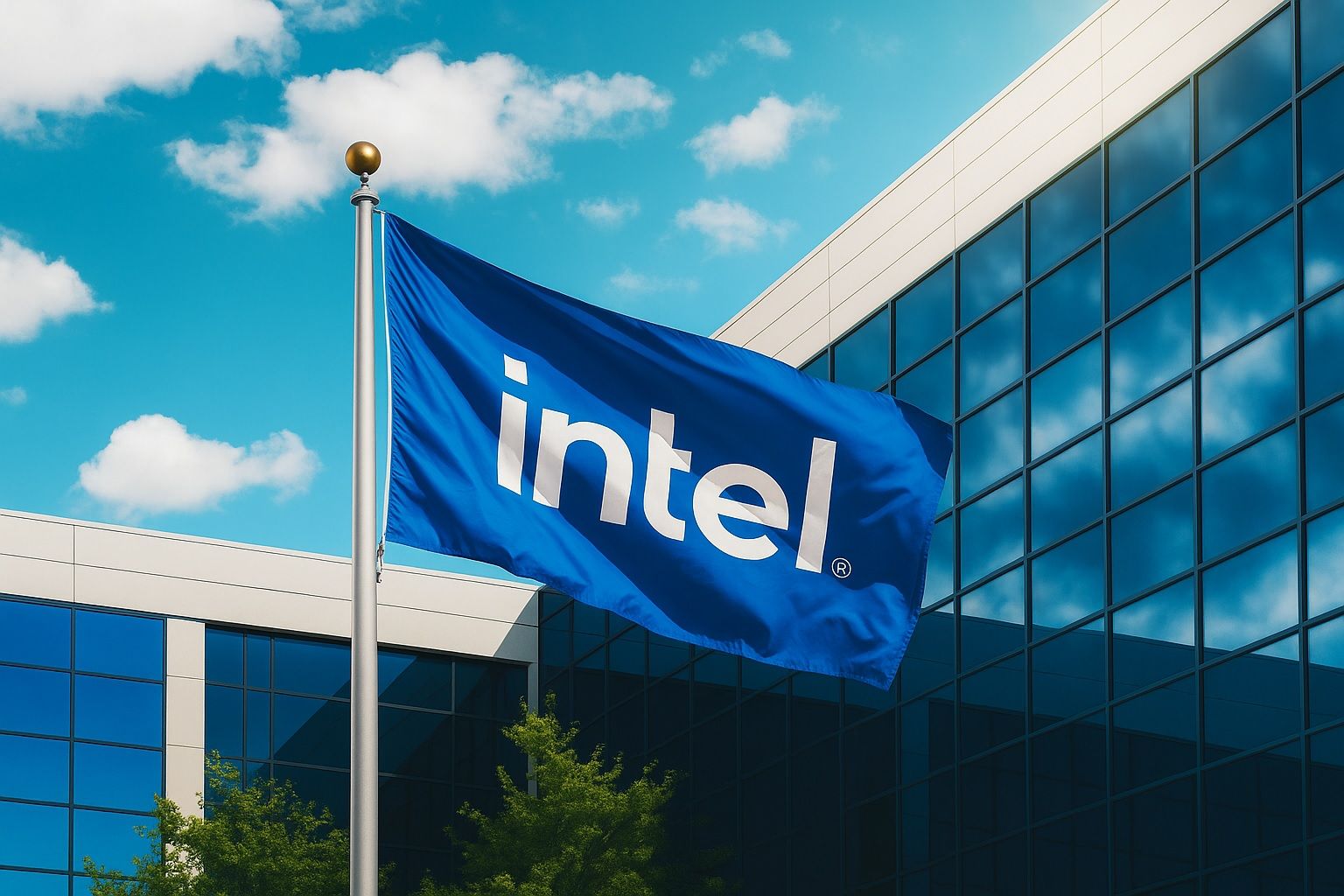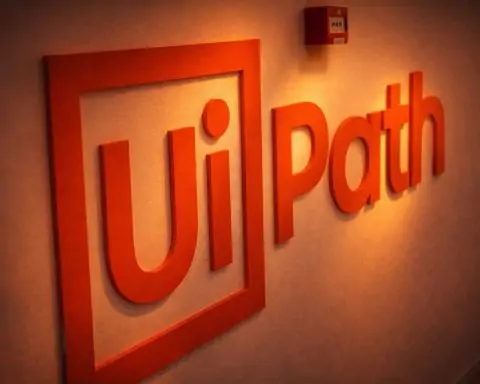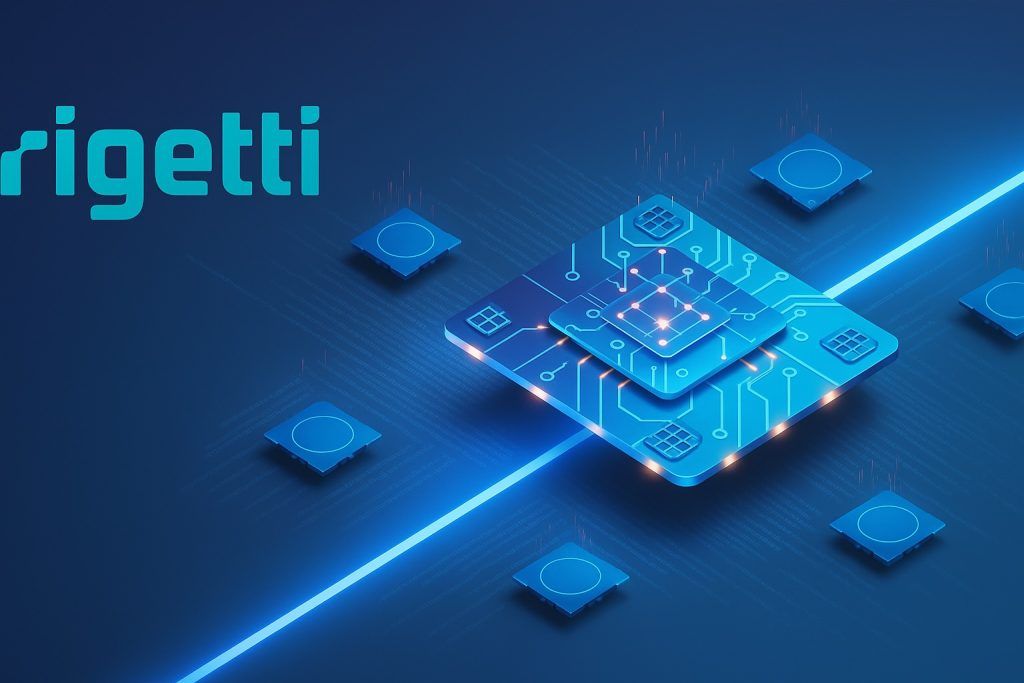Intel Corporation (NASDAQ: INTC) is back in the spotlight today as fresh job cuts in Oregon, an AI leadership reshuffle, and a wave of new institutional filings collide with lingering concerns about its artificial intelligence strategy and profitability.
Intel Stock Today: INTC Pauses After 5% Slide
After a sharp sell‑off on Thursday, Intel stock is trading around $35.77 on Friday afternoon, down about 0.4% on the day. That leaves shares just below Thursday’s close of $35.91, when the stock dropped roughly 5.2% in a single session. [1]
According to MarketBeat data, the recent slump comes after a strong 2025 rally that pushed Intel as high as $42.48 over the past 52 weeks, versus a low of $17.67, putting the stock still well off its multi‑year peak but dramatically above its early‑2025 levels. [2] Independent coverage from TechStock² (TS2) previously pegged Intel’s year‑to‑date gain at around 85% as of late October, underscoring just how powerful the AI‑driven rebound has been. TechStock²
Thursday’s drop, now being digested by markets today, was driven largely by AI‑related disappointment (notably OpenAI’s decision not to buy Intel chips) and concern that expectations had run ahead of fundamentals. [3]
Oregon Layoffs Underscore Cost‑Cutting Push
The headline corporate development today is a new round of layoffs in Intel’s home territory of the Pacific Northwest.
A report from KATU, syndicated across several local outlets, says Intel will cut 669 jobs across its Hillsboro and Aloha, Oregon operations, with the reductions scheduled to occur before the end of the year. [4]
Key details:
- The 669 cuts follow roughly 2,500 positions eliminated over the summer, signaling a sustained restructuring push. [5]
- The company earlier announced it would suspend its stock dividend starting in the fourth quarter, preserving cash as it ramps U.S. manufacturing and AI investments. [6]
- Local coverage frames the move as part of Intel’s effort to rein in costs while competing with Nvidia and AMD in high‑performance chips. [7]
For Intel’s turnaround story, the Oregon layoffs highlight the trade‑off at the heart of the strategy: the company is pouring tens of billions into cutting‑edge fabs and AI platforms, but it is also aggressively trimming headcount and shareholder payouts to make the math work.
AI Strategy in Flux: CEO Lip‑Bu Tan Takes Direct Control
At the same time, Intel’s AI leadership structure is shifting in a way that has grabbed Wall Street’s attention.
On November 10, Intel confirmed that CEO Lip‑Bu Tan will personally oversee the company’s AI and Advanced Technologies Groups after Chief Technology Officer and Chief AI Officer Sachin Katti left to join OpenAI. [8]
Reuters reports:
- Katti, who had led Intel’s AI efforts since a January reorganization, announced on X (Twitter) that he had joined OpenAI.
- Intel said Tan will now directly lead AI and advanced technologies, emphasizing that “AI remains one of Intel’s highest strategic priorities.” [9]
- The move follows several senior departures as Tan reshapes the leadership team and tries to reboot Intel’s foundry and data‑center roadmap. [10]
For investors, this is a double‑edged signal:
- Positive: The CEO taking direct control of AI suggests urgency and focus at the very top.
- Negative: Another high‑profile AI leader leaving for OpenAI reinforces fears that Intel is still playing catch‑up in AI accelerators versus Nvidia and other rivals.
OpenAI Snub Adds to AI Reality Check
The Katti move isn’t Intel’s only OpenAI headache.
A widely circulated piece from TipRanks, echoed in MarketBeat’s “Why Is Intel Down Today?” recap, notes that OpenAI has signaled it will not be buying Intel’s AI chips, even after heightened speculation around U.S. government and strategic investments in the company. [11]
This matters because:
- A high‑profile design win with OpenAI could have validated Intel’s data‑center AI silicon against Nvidia and custom accelerators.
- Instead, the decision reinforces the perception that Intel is still struggling to land marquee AI cloud customers, even as it invests heavily in next‑gen GPUs and custom silicon.
In contrast, other coverage has highlighted hopeful AI angles, including:
- Rumors that Tesla is exploring custom AI chips and may use Intel’s foundry services for manufacturing. [12]
- A string of AI‑related collaborations, including a multi‑billion‑dollar investment by Nvidia and SoftBank and a high‑profile U.S. government funding package tied to Intel’s fabs, detailed in Intel’s latest earnings release. [13]
Together, the OpenAI snub and Tesla speculation frame Intel’s AI position as high‑risk, high‑reward: the company is clearly in the game, but not yet viewed as a default choice for top‑tier AI workloads.
Q3 2025 Earnings: Better Execution, But Profitability Questions
Investors are still digesting Intel’s third‑quarter 2025 results, published on October 23 and heavily referenced in analyst commentary this week. [14]
From Intel’s own report:
- Revenue: $13.7 billion, up 3% year‑over‑year.
- GAAP EPS: $0.90 per share, boosted by one‑time gains tied to government funding and asset sales.
- Non‑GAAP EPS: $0.23 per share.
- Q4 guidance: Revenue of $12.8–$13.8 billion and non‑GAAP EPS of $0.08, with GAAP EPS expected to be slightly negative. [15]
By segment:
- Client Computing Group (PCs): $8.5 billion, up 5% YoY.
- Data Center & AI: $4.1 billion, down 1% YoY.
- Intel Foundry: $4.2 billion in revenue, down 2% YoY. [16]
But while the top line and execution are improving, profitability remains the flash point:
- MarketBeat data pegs Intel’s underlying net margin at just 0.37% and its return on equity slightly negative, based on the same Q3 numbers and adjusted metrics. [17]
- Analysts tracked by MarketBeat expect Intel to post a small full‑year loss of around –$0.11 per share, despite the big GAAP profit headline. [18]
In other words, Intel’s turnaround is visible in revenue, gross margin and cost control — but the core earnings power of the business is still fragile once one‑off boosts are stripped away.
Wall Street Mood: Downgrade and “Reduce” Consensus
Today’s news flow also includes a fresh reminder that not everyone on Wall Street is convinced Intel can keep its hot streak going.
A GuruFocus alert notes that Oakoff Investments has downgraded Intel to “Hold”, citing operational challenges and skepticism that the company can continue to outperform already bullish expectations. [19]
Separately, MarketBeat’s consensus snapshot shows:
- 2 Buy, 23 Hold, and 8 Sell ratings on INTC.
- An overall consensus rating of “Reduce” and an average price target of about $34.84, slightly below where the stock is trading today. [20]
That combination — improving fundamentals, but a still‑cautious analyst base — helps explain the stock’s choppy behavior this week as investors recalibrate risk and reward.
Big Money Moves: Who’s Buying and Who’s Trimming Intel
New 13F filings released today show a mixed but active picture for institutional ownership in Intel:
- Vise Technologies Inc. opened a new position in Q2, buying 43,236 shares worth about $968,000. [21]
- Fiera Capital Corp disclosed a new stake of 433,532 shares, valued at roughly $9.7 million. [22]
- On the other side, Banco Bilbao Vizcaya Argentaria S.A. (BBVA) cut its Intel holdings by 18.1% to 1,289,023 shares, now worth about $29 million. [23]
- Mitsubishi UFJ Trust & Banking Corp trimmed its stake by 3.2%, ending Q2 with about 1.91 million shares valued near $42.8 million. [24]
Despite the churn, MarketBeat data indicates that roughly 64–65% of Intel’s shares are held by institutions and hedge funds, a sign that the stock remains deeply embedded in global portfolios even as opinions diverge on its AI and foundry bets. [25]
Industry Backdrop: Semiconductors Still in a Long‑Term Supercycle
Providing a broader context for Intel’s moves, a new BCC Research report released today forecasts that the global semiconductor chip market will grow from $737.2 billion in 2025 to $1.6 trillion by 2030, a 16.1% compound annual growth rate. [26]
Key growth drivers include:
- Ongoing expansion in data centers and cloud computing
- Demand for AI‑powered IoT and edge devices
- Rapid growth in electric vehicles
- Rollout of 5G and advanced connectivity
Intel is explicitly listed among the leading market players alongside AMD, Nvidia, TSMC, Samsung, and others. [27]
This backdrop helps explain why Intel — despite its short‑term stumbles — continues to attract large strategic investments from the U.S. government, Nvidia and SoftBank and remains central to debates about technological and industrial policy. [28]
How Today’s Intel News Fits Together
For readers tracking Intel stock today (INTC), the November 14 news flow converges around a few core themes:
- Cost discipline is getting harsher.
New Oregon layoffs and the suspended dividend show Intel is willing to make unpopular moves to fund fabs, AI R&D and its foundry expansion. [29] - AI strategy is high‑stakes and unsettled.
The CEO’s direct control of AI, the CTO’s defection to OpenAI, and OpenAI’s decision not to buy Intel chips highlight both the urgency and the uncertainty surrounding Intel’s AI roadmap. [30] - Fundamentals are improving, but not bullet‑proof.
Q3 showed better revenues, sharply higher gross margins and serious cost cuts — but underlying profitability remains thin and 2025 is still likely to be a near‑break‑even year at best. [31] - Wall Street is split, institutions are rotating.
A new downgrade to “Hold,” a “Reduce” consensus, and simultaneous buying and selling by large funds underscore the fact that Intel is controversial, not ignored. [32] - The macro wind is still at Intel’s back.
A projected 16% annual growth rate for the semiconductor market over the next five years suggests plenty of room for winners — if Intel can execute on its AI, foundry and PC roadmaps. [33]
For now, INTC is behaving exactly like what it is: a high‑beta turnaround in the middle of an AI arms race, where every headline — from layoffs in Oregon to OpenAI deal chatter — can move the narrative and the share price.
Note: This article is for informational and news purposes only and does not constitute investment advice, a recommendation to buy or sell any security, or a prediction of future performance. Always do your own research or consult a licensed financial adviser before making investment decisions.
References
1. www.marketbeat.com, 2. www.marketbeat.com, 3. www.marketbeat.com, 4. wchstv.com, 5. wchstv.com, 6. wchstv.com, 7. wchstv.com, 8. www.reuters.com, 9. www.reuters.com, 10. www.reuters.com, 11. www.tipranks.com, 12. www.fool.com, 13. www.intc.com, 14. www.intc.com, 15. www.intc.com, 16. www.intc.com, 17. www.marketbeat.com, 18. www.marketbeat.com, 19. www.gurufocus.com, 20. www.marketbeat.com, 21. www.marketbeat.com, 22. www.marketbeat.com, 23. www.marketbeat.com, 24. www.marketbeat.com, 25. www.marketbeat.com, 26. www.globenewswire.com, 27. www.globenewswire.com, 28. www.intc.com, 29. wchstv.com, 30. www.reuters.com, 31. www.intc.com, 32. www.gurufocus.com, 33. www.globenewswire.com







